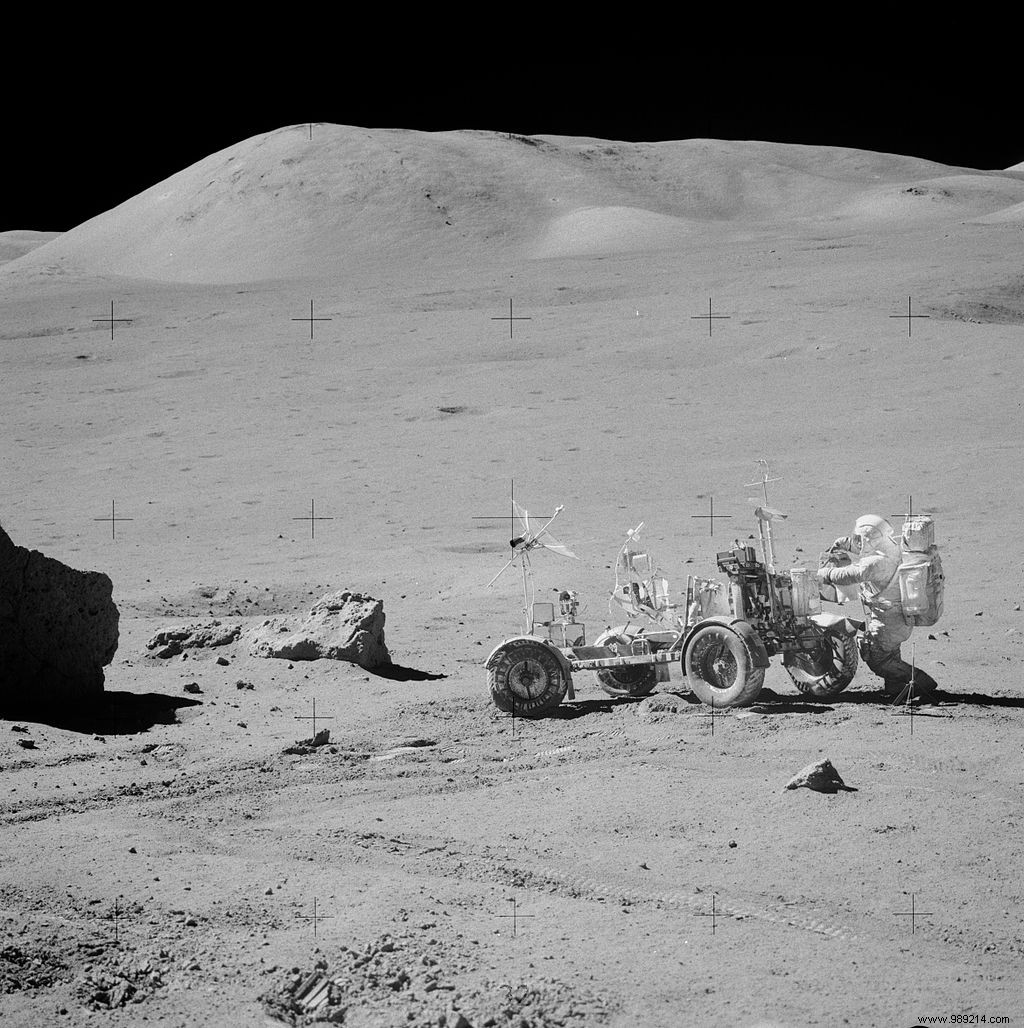Lunar samples set aside from the Apollo 17 mission nearly fifty years ago will soon be opened and analyzed. Inside, researchers hope to find gases that will be analyzed in several laboratories around the world. Something to take a new look at our satellite.
Many samples brought back following the Apollo missions have made it possible to better understand the geology of the Moon. However, not all of them have been opened yet. During the Apollo 15 (1971) and Apollo 17 (1972) missions, mission planners indeed had the intelligence to put some of them aside with the idea that future scientists would have better instruments. and richer knowledge .
After remaining sealed for fifty years, one of these contents is now ready to be opened.
The sample in question was collected by Gene Cernan in 1972 in the Taurus-Littrow valley, after driving a 70 cm long tube into the surface. The bottom half of this core was then sealed in place, before being placed in a vacuum chamber once the astronauts returned to Earth. Since then, this sample (number 73001) has remained intact.
In a few weeks, researchers plan to analyze it in detail with the hope that lunar gases may still be present inside, in particular hydrogen, helium and other light gases. Their examination could deepen our understanding of lunar geology and shed new light on the best way to store future extraterrestrial samples .

As part of this work, the Apollo Next Generation Sample Analysis Program (ANGSA), which manages these intact treasures, commissioned the European Space Agency to release in safely these trapped gases. This is the first time that ESA has been involved in the opening of samples returned by the Apollo program.
The idea will be to puncture the vacuum container with extreme care to release the gases, which will then be collected in an extraction collector developed by a group of research partners from the University of Washington in St Louis, Missouri (USA). The objective of this operation will be to avoid any contamination of terrestrial origin . If present, the gases will then be divided into several containers and sent to specialized laboratories around the world for analysis.
“We look forward to hearing how well the vacuum container preserved the sample and fragile gases “, said Francesca McDonald, chief scientist and project manager at ESA. "Each of these components could help tell a different part of the origin and evolution of volatiles on the Moon."